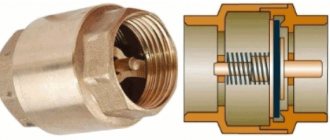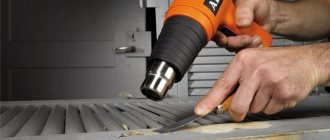It is now quite difficult for the average person to understand the abundance of files of various shapes with all possible sizes of notches and the scope of their application. That is why the article will consider the classification of the main types of this tool, which in the future will be replenished with new types of files, since the new models are very different from the old ones.
Although the first file appeared quite a long time ago, it is almost impossible to find a replacement for it even in the age of progressive technologies, because most wood and metal work is performed with the help of this tool. The device provides the selected material with the required shape and size by layer-by-layer grinding of its surface.
What is the file for?
A file is a universal tool that is used for processing and cleaning metal parts. The design of the product is made in the form of a small block. A metal alloy is chosen for its manufacture.
Along the perimeter there are notches of different sizes and thicknesses. There is a shank at the end, thanks to which the handle is fixed. It can be made of plastic or wood.
Where is a file used? There are several areas in which this tool is used:
- Processing the edges of a metal workpiece. In the process, it is possible to achieve the required dimensions of the part;
- Removing rust, paint and dirt;
- Sharpening cutting edges;
- Grinding.
How does the tool work? To grind the metal part, the master applies slight force to the grooved part of the file. The teeth, which are located along the entire perimeter of the metal bar, are in contact with the surface being processed, thereby removing a thin layer of metal.
Files are produced taking into account the requirements of GOST 1465-59. For this purpose, it is envisaged to use a certain type of steel, which is used for different types of surfaces.
Using files
Different shapes need to be used for certain parts. The classic flat model is used when you need to sand smooth surfaces. Triangular machines process grooves and grooves. Work is performed at an angle. Square - holes of different shapes. The bumps are ground into semicircular shapes and the grooves are leveled.
Metal files are considered a universal tool that is used for processing parts of various shapes. The variety of shapes, sizes of devices, and tooth sizes allows you to expand their scope of application.
Technical features of the file
It is important to consider several requirements before purchasing a file. They are as follows:
- Product size. Tool parameters should be selected taking into account the area in which it will be used. For example, to process small iron areas, compact product models will be needed;
- Handle material. Plastic models slip in the hand when pressed for long periods of time. The wooden base is more pleasant to the touch;
- Tip material. For frequent use, it is recommended to select models whose working part is made of steel categories ШХ 15, 13Х, У10А;
- Notch size. The metal part can be made in the form of thin strips, thick ribs or alternating.
If you take these recommendations into account, you will be able to purchase a tool that will meet all the requirements. Compact and miniature products should not be used for processing large parts. To do this, the file size must be at least 15 cm.
Types of modern files
Today there are several types of products. They are divided into several groups depending on the following characteristics:
- A type of notch. They can be located along the entire perimeter of the metal bar or present in several parts of the tool;
- Product form. File models can be round, triangular, quadrangular;
- Application area.
Features of files
Hard types of metal materials are used to make files. The fact is that when exerting physical impact on the working surface, deformation of the product may occur.
The file is used for turning, milling, broaching and cutting parts of different sizes. In turn, they are divided into:
- Single. They are used to work with products that are made of soft metal, plastic or wood;
- Double. These product options have the shape of a triangle, rectangle or circle. The notches are applied at a certain angle, which allows you to quickly erase metal boundaries. Upon contact with a hard substrate, thin chips are formed. Such models are divided among themselves by the size of the teeth. There are 5 categories of files.
Experts recommend purchasing all models of products to carry out different types of work at home.
Tool Specifications
A classic modern file in its appearance resembles a block made of a special grade of steel, with a surface carved according to a certain pattern. Most of these cutting tools are characterized by a triangular, rectangular or round cross-section of the bar, but there are also other types of sections.
The most commonly used material for the manufacture of the device are different types of high-quality tool steel , for example, alloyed chromium (ShKh15 and 13Kh) and improved unalloyed steel (U10A - U13A).
One of the components of this tool is a plastic or wooden handle attached to a narrowed cone-shaped shank. The part does not perform any important functions, does not affect the quality of the file and serves only for ease of use by the worker. If such a handle disappears, there is absolutely no point in throwing away the tool - it is enough to replace one part with another.
The quality and scope of application of a file directly depends on the type of notch applied to it, as well as on the configuration of the teeth. When making a file to apply such teeth, the methods most often used are milling, drawing, notching or turning, but recently manufacturers have begun to produce files mainly with teeth cut on a special machine .
Types of files
According to their purpose, files are divided into several types. These include:
- Manual. It can be used in any field of activity. Most often, this tool is chosen by mechanics and turners. On the surface of the metal bar there is a certain double-type notch. The selection of teeth should be carried out depending on the quality of the desired result;
- Special purpose models. They are chosen at industrial enterprises that produce parts of various sizes. With their help, you can quickly remove defects formed after the machine. They are of high quality;
- Needle files. This type belongs to a common group, which includes 10 subgroups of the instrument. They are divided according to shape and size. There is a circular notch along the perimeter of the model. The size of the notches varies from 1 to 5. This category of tool was developed for accurate and precise processing of small elements;
Rasps. The product is distinguished by its long length and the presence of large teeth along the perimeter of the metal bar. The verse is selected to create a rough draft.
It is necessary to select a tool taking into account its size, category, type and thickness of teeth.
Classification of files
There are different types of files. These devices are divided according to several factors:
- type of notches;
- the form of the device for working with workpieces;
- purpose.
Each of the groups presented should be discussed in more detail.
Types of files for metal
Peculiarities
In the understanding of people not involved in metalworking, a device designed for grinding metal workpieces is a tool consisting of a working rectangular part, which is connected to a handle. There are notches on the metal rectangle. They remove part of the metal when transferring forces. However, there are different forms of the working part.
The file cannot be made of soft materials. The steel used for them must be harder than the surfaces being processed.
Types of notches
File notches play a direct role when working with different materials. To apply them to the working surface of the tool, several technological operations are used - turning, milling, notching, drawing, cutting.
Types of file notches:
- Single - designed for working with soft materials: alloys of non-ferrous metals, wood and plastic.
- Double - represent additional and main notches. The additional one is adjacent to the main one at an angle. This design allows you to work with hard materials. This is due to the fact that two notches remove a layer of material while crushing the emerging chips.
Tools are classified by tooth size. This indicator depends on how many notches are present on the working part. The fewer there are, the larger the tooth is made. There are 5 tooth size numbers:
- Numbers 0, 1 - used for rough processing of metal surfaces. The teeth are the largest, allowing you to quickly remove a lot of material in a short period of time. The disadvantage of such devices is low processing accuracy.
- Sizes 2.3 - used when you need to clear a layer down to 0.06 mm.
- Sizes 4, 5 - used for finishing parts. A small layer of material is removed, which allows for precise operations and bringing the workpiece to the required dimensions.
It is advisable to have all the numbers in order to gradually process the work surface.
Types of files
According to their intended purpose, the following types of files are distinguished:
- General purpose hand tools. Used in plumbing work. Double notch. The size of the teeth is selected depending on the required quality of processing.
- Special purpose devices. They are used in metalworking factories. With their help, defects remaining after processing workpieces by machines are corrected. Withstands long-term active use.
- Needle files are the most common group, which consists of 11 subgroups of models of different shapes. They have number five notches and are small in size. Needle files are used for precise processing of parts.
- Rasps are long-length models with large teeth. Used for rough metal processing.
You need to choose a device based on its size, shape, and size of teeth.
File shape
Metal files are classified depending on their shape. The following types of instruments exist:
- Flat - the classic form of devices for processing metal surfaces.
- Triangular - they are used to bore grooves, grooves, and holes.
- Square - used when working with holes of complex shape.
- Semicircular tools - they are used to bore large diameter holes.
- Round - used for boring oval round holes of different diameters.
- Diamond-shaped - process the teeth of parts, gears, and equipment.
File shapes
File shape
Today in special departments you can find files of different lengths and shapes.
They are divided into several types:
- Flat. Such models are considered classic. They are used to create grooves, holes and grooves;
- Triangular or triangular. Notches are used on the surface, applied at a certain angle;
- Square. They are chosen for creating complex holes;
- Round. They are designed for processing large holes;
- Diamond-shaped. Products of this shape are chosen for the consciousness of gears.
There are several factors to consider when choosing. They are as follows:
- The working surface material must be made of dense steel. The notches can be created in the form of a diamond coating. Thanks to this, it is possible to quickly grind iron workpieces;
- Product parameters. The length and width of the file should be selected taking into account the area of its application. For example, for miniature holes and grooves, it is better to choose models of compact sizes;
The size of the teeth is selected taking into account the type of processing. For example, files with large teeth are suitable for rough work that does not require precision.
Features of using different files
In the process of work, the shape of the bar plays an important role, because it is from this that the scope of application of the file can be determined. According to the method of use, devices are divided into:
- flat standard or flat pointed (for processing external and internal flat surfaces);
- square (for sawing square, rectangular and polygonal holes);
- round (for processing small round and oval holes, as well as concave surfaces with a small radius);
- semicircular (for processing large holes and concave surfaces with a large radius of curvature);
- rhombic (for working with gear-type parts);
- triangular (for processing hard-to-reach places, for example, grooves, grooves and the outer sides of parts with an acute angle);
- hacksaws (for making grooves and narrow grooves, processing internal corners and planes in various holes, mainly rectangular, square and diamond-shaped).
The service life of the device directly depends on the manufacturer, the quality of the notching and heat treatment.











